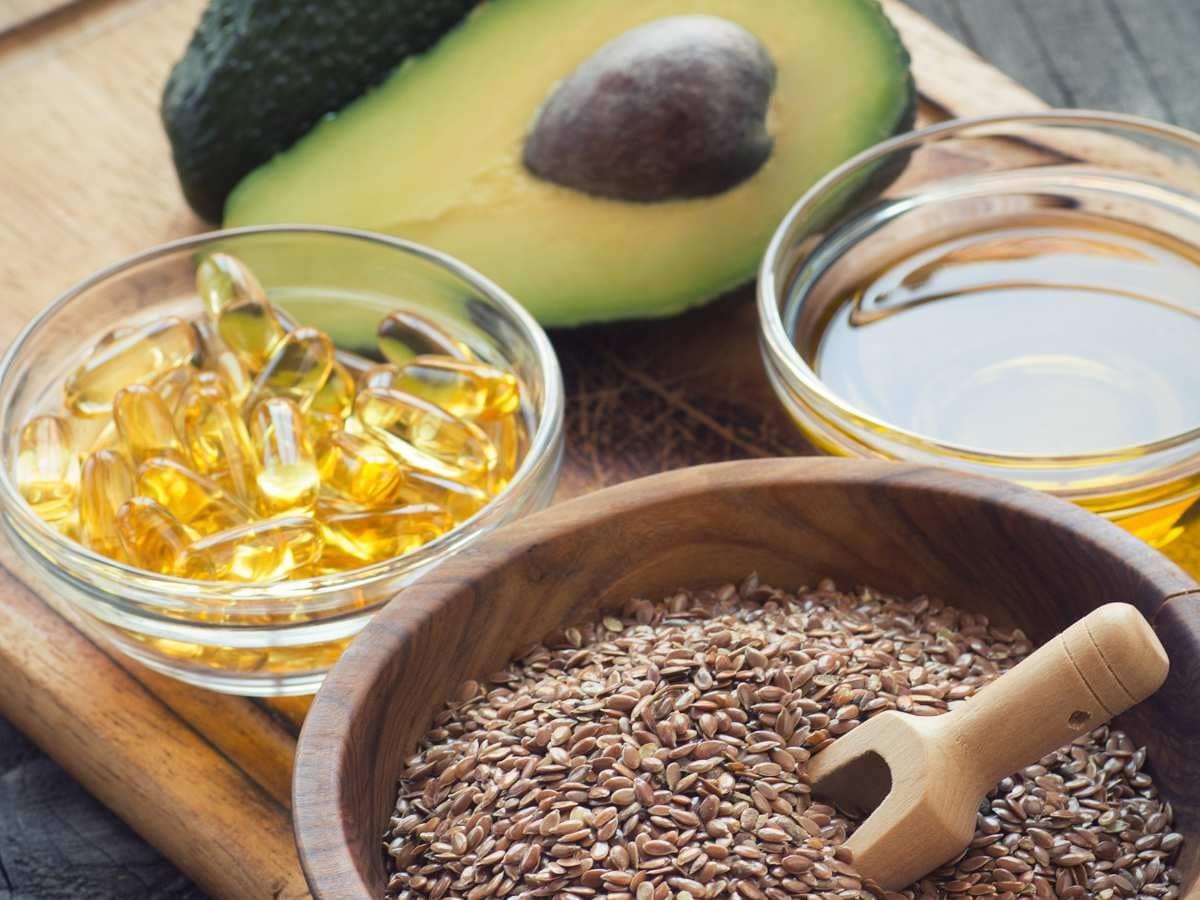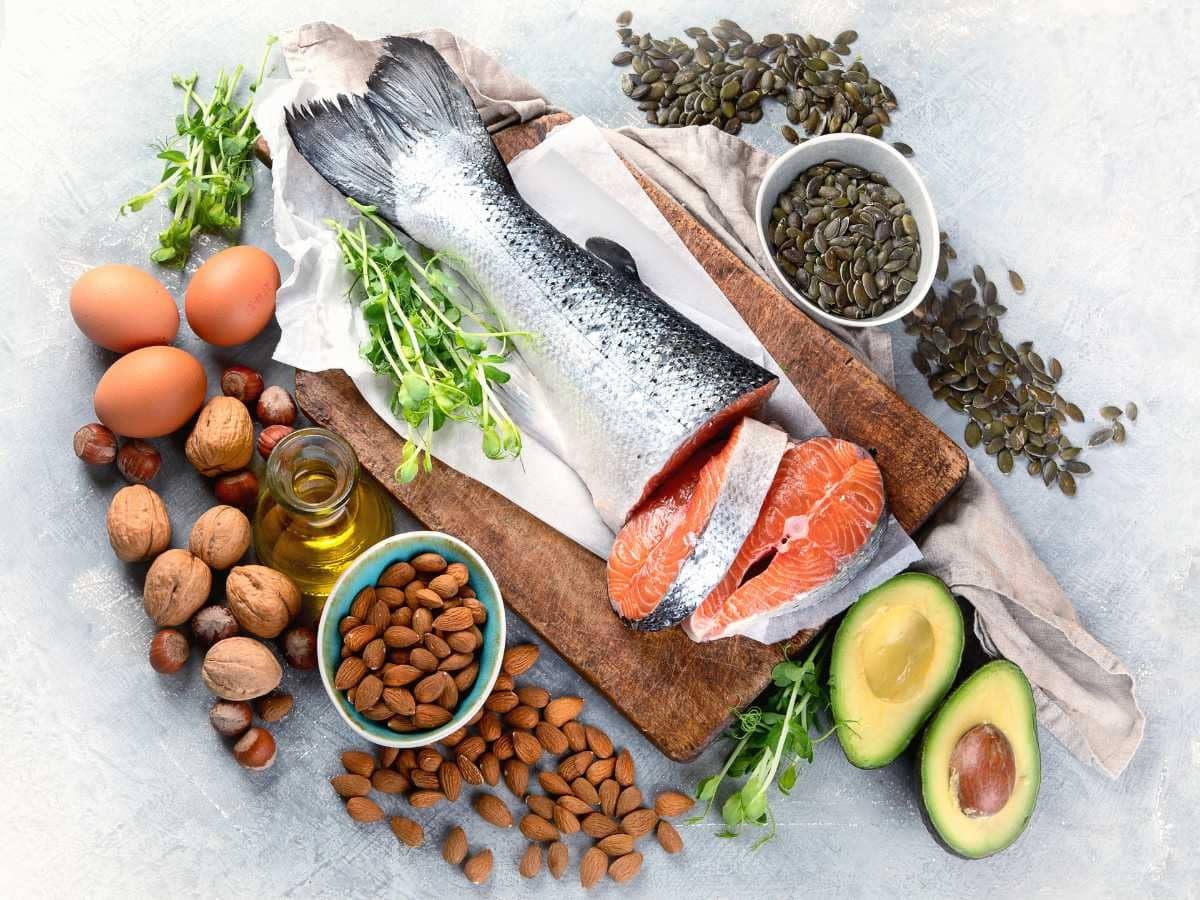Contrary to popular belief, Omega-3s don’t exclusively come from fishy origins. They also come from more grounded regions, which have recently grown in popularity due to the increased adoption of veganism. Traditionally vegan populations have been left out to sea and struggled to get their recommended Omega-3 intake of 250mg omegas per day (1). Omega-3 is crucial in helping with bone, heart and eye health, but its health benefit varies based on its source and type, so read more to ensure you’re getting the health benefits you need.
Fish Oil
Easily the most recognised source of Omega-3, fish oil is derived from multiple species of fatty fish, including anchovies, trout, tuna sardines and salmon (2). This wide array of fish has helped make fish oil one of the most popular supplements around the globe. Fish Oil consists of docosahexaenoic acid (DHA) and Eicosapentaenoic acid (EPA), two classifications of Omega-3 primarily found in seafood. DHA and EPA are found in cell membranes and improve the ability of nerve cells to send and receive electrical signals (3).
Fish Oil provides critical support to your skin, eyes and cognitive function. But fish oil is possibly best known for its ability to improve cardiovascular system function and reduce heart-related issues like high cholesterol and high blood pressure. An effect studied in a recent journal article found systolic and diastolic BP decreased more in the fish oil group than in the placebo group (4).
In addition to its multiple reported health benefits, fish oil may provide some other advantages than its counterparts. Due to its commonality of being found in millions of fish, fish oil is more accessible than other Omega-3s, making it easier to purchase in capsules and more convenient to find research confirming its health effects.
Algae Oil
A more nuanced form of Omega-3, Algae oil is found exclusively in types of microalgae cultivated in ponds and lakes, relying on light and the photosynthesis process to grow (5). Even though the use of Algae oil is relatively new, a premier ingredient in this space is an all-natural strain of microalgae called Almega PL ® (Nannochloropsis oculata), consisting of Eicosapentaenoic acid (EPA), which helps prevent blood from clotting (6).
Algae oil provides similar health benefits to other Omega-3s, with the addition of other health conditions, including cholesterol. An example of such comes from an Australian-based study, which found that 60 participants who took a 1g Almega PL supplement reported their very-low-density lipoprotein cholesterol (VLDL) decreased by 25% (7). A benefit generally associated with EPA-only-based formulations. Overall emphasising that Algae oil can naturally increase the Omega-3 Index and manage cholesterol levels (5).
Another intriguing aspect of Algae oil is that its one of the most sustainable Omega-3s as Algae oil has the capacity of being 100% carbon neutral reducing both farming and environmental impact, due to its light-based production. Ensuring that all elements are reusable, as its superior reproducibility assures its reserves are continuously stocked, and leads to no toxic waste, with excess materials having the ability to be used in animal feeds and biofuels.
Seeds and Nuts
As alluded to earlier in this blog, not all Omega-3 sources have marine-based ties. There is a variety of seeds and nuts that can help you get your required Omega-3 intake. Some of the chief ingredients in this space include your hardy seeds encompassing Flaxseed, Walnuts and Chia seeds. In addition to other green alternatives like edamame and brussels sprouts (8). The main distinction that separates these from their aquatic adversaries, is that these are considered alpha-linolenic acid (ALA) Omega-3s, which differ from the other Omega-3s, as it is commonly used to improve overall growth and development, especially in terms of blood vessels (9).
In comparison to the other alternate types of Omega-3, seeds and nuts seem to provide similar health benefits, with current research attributing its main health benefit to improving cardiovascular risk factors. A claim based on a 2022 study found that over 30 years of research, people who consumed ALA Omega-3 rich products like walnuts had a better CVD risk profile than no-nut consumers. The contributing factors include lower body mass index, blood pressure and triglyceride concentration (10).
Some of the main advantages that seeds and nuts have over other types of Omega-3 is that due to their non-animal-based roots, they are suitable for both vegetarians and vegans. A factor that is becoming more and more crucial due to the increased demand foreseen by the vegan-based movement pressuring brands to provide more vegan alternatives. But it should be noted that the road ahead for plant-based Omega-3s still has far to go. As to getting all the required health benefits of ALA Omega-3, it needs to be converted throughout the body as either DHA or EPA, but studies have noted only 5-10% gets converted.

Final Thoughts
Overall sources of Omega-3 are more wide-ranging than meets the eye, with different classifications tailored to specific health benefits and providing alluring advantages that better appeal to different consumer bases providing brands with the opportunity to innovate with different product lines and get ahead in a rapidly evolving space.
Experts have theorised that the Omega-3 market will grow to a compound annual growth rate of 7.8% from 2020 to 2028, and that’s only in the US alone (11). Therefore we expect Omega-3s to be a hot and trending topic within the health community but be sure to check its source and Omega-3 classification to make sure you are getting the health benefits you need.
If you enjoyed reading this blog, consider joining our mailing list to ensure you are kept up to date with the latest health and complementary medicine news and information. Additionally, if you have any interest in Omega-3 supplement manufacturing, contact us at sales@www.lipa.com.au to learn about the possible products and formats available.
Reference List
1. Hjalmarsdottir, F., 2019. How Much Omega-3 Should You Take per Day?. [online] Healthline. Available at: <https://www.healthline.com/nutrition/how-much-omega-3> [Accessed 30 September 2022].
2. Marengo, K., 2021. Fish oils and omega-3 oils: Benefits, foods, and risks. [online] Medicalnewstoday.com. Available at: <https://www.medicalnewstoday.com/articles/40253> [Accessed 29 September 2022].
3. Crawford, M., Leigh Broadhurst, C., Guest, M., Nagar, A., Wang, Y., Ghebremeskel, K. and Schmidt, W., 2013. A quantum theory for the irreplaceable role of docosahexaenoic acid in neural cell signalling throughout evolution. Prostaglandins, Leukotrienes and Essential Fatty Acids, [online] 88(1), pp.5-13. Available at: <https://pubmed.ncbi.nlm.nih.gov/23206328/> [Accessed 29 September 2022].
4. Naini, A. E., Keyvandarian, N., Mortazavi, M., Taheri, S., & Hosseini, S. M. (2015). Effect of Omega-3 fatty acids on blood pressure and serum lipids in continuous ambulatory peritoneal dialysis patients. Journal of Research in Pharmacy Practice, 4(3), 135-141. https://doi.org/10.4103/2279-042X.162356
5. Danahy, A., 2020. Algae Oil: Nutrition, Benefits, and More. [online] Healthline. Available at: <https://www.healthline.com/nutrition/algae-oil> [Accessed 29 September 2022].
6. Sublette, M. E., Ellis, S. P., Geant, A. L., and Mann, J. J. Meta-analysis of the effects of eicosapentaenoic acid (EPA) in clinical trials in depression. J.Clin.Psychiatry 2011;72(12):1577-1584.
7. Rao, A., Briskey, D., Nalley, J.O. and Ganuza, E. (2020). Omega-3 Eicosapentaenoic Acid (EPA) Rich Extract from the Microalga Nannochloropsis Decreases Cholesterol in Healthy Individuals: A Double-Blind, Randomized, Placebo-Controlled, Three-Month Supplementation Study. Nutrients, 12(6), p.1869. doi:10.3390/nu12061869.
8. Link, R., 2021. The 7 Best Plant Sources of Omega-3 Fatty Acids. [online] Healthline. Available at: <https://www.healthline.com/nutrition/7-plant-sources-of-omega-3s#TOC_TITLE_HDR_8> [Accessed 30 September 2022].’
9. Blondeau, N., Lipsky, R. H., Bourourou, M., Duncan, M. W., Gorelick, P. B., & Marini, A. M. (2015). Alpha-Linolenic Acid: An Omega-3 Fatty Acid with Neuroprotective Properties—Ready for Use in the Stroke Clinic?. BioMed Research International, 2015. https://doi.org/10.1155/2015/519830.
10. Yi, S., Steffen, L., Zhou, X., Shikany, J. and Jacobs, D., 2022. Association of nut consumption with CVD risk factors in young to middle-aged adults: The Coronary Artery Risk Development in Young Adults (CARDIA) study. Nutrition, Metabolism and Cardiovascular Diseases, [online] 32(10), pp.2321-2329. Available at: <https://www.nmcd-journal.com/article/S0939-4753(22)00302-7/fulltext> [Accessed 30 September 2022].
11. Grandviewresearch, 2022. Omega 3 Market Size & Share Report, 2020-2028. [online] Grandviewresearch.com. Available at: <https://www.grandviewresearch.com/industry-analysis/omega-3-market> [Accessed 30 September 2022].
Work with Australia’s Leading Pharmaceutical Manufacturer
Businesses seeking an alternative pharmaceutical manufacturer in Australia need look no further than Lipa Pharmaceuticals. We are an 8-time winner of Australia’s High Quality Manufacturer Award for complementary medicines and have the capability to manufacture high volumes of vitamins, health food supplements, and over-the-counter medication.
With over 30 years of industry experience and fully-equipped production facilities, we can work with your business to produce custom products in a private label or contract manufacturing arrangement. Get in touch with us today to find out how to partner with our cost-effective pharmaceutical manufacturing solutions in Australia.
